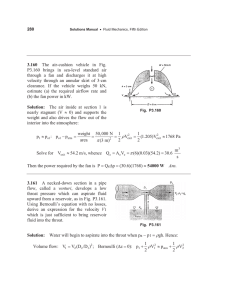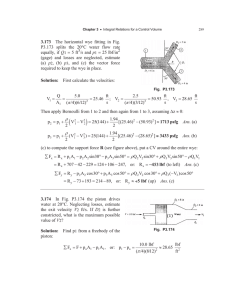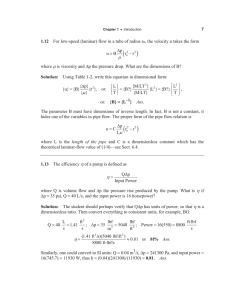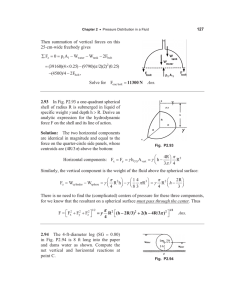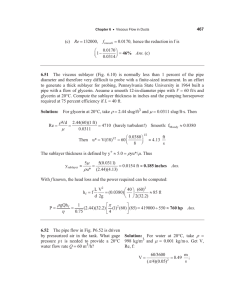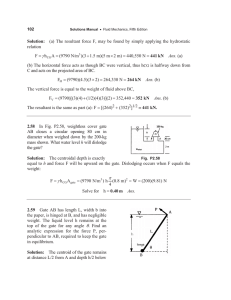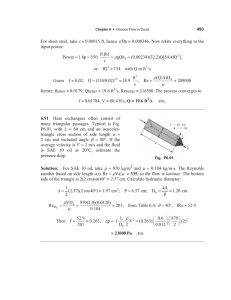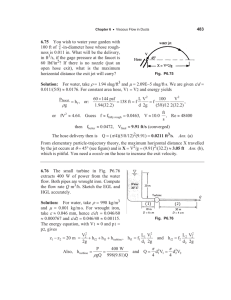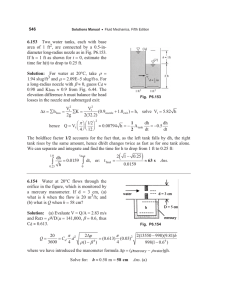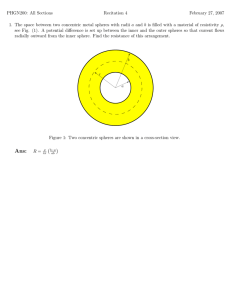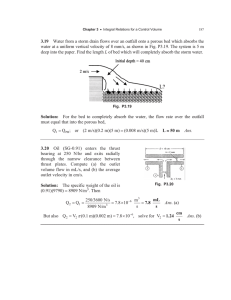3.114 Fig. P3.114 receives 20°C water through the center at 2.7 m
advertisement
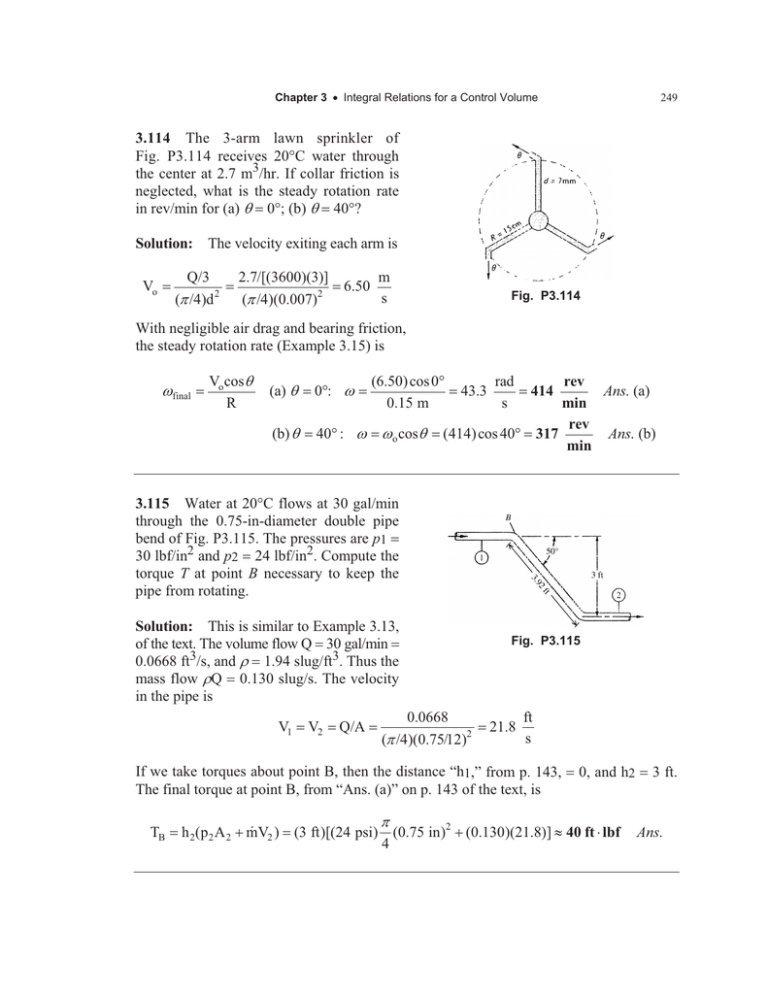
Chapter 3 x Integral Relations for a Control Volume 249 3.114 The 3-arm lawn sprinkler of Fig. P3.114 receives 20°C water through the center at 2.7 m3/hr. If collar friction is neglected, what is the steady rotation rate in rev/min for (a) T 0°; (b) T 40°? Solution: The velocity exiting each arm is Q/3 (S /4)d 2 Vo 2.7/[(3600)(3)] (S /4)(0.007)2 6.50 m s Fig. P3.114 With negligible air drag and bearing friction, the steady rotation rate (Example 3.15) is Zfinal Vo cosT R (a) T 0q: Z (b) T q Z (6.50) cos 0q 0.15 m Zo cosT rev Ans. (a) min rev (414) cos 40q 317 Ans. (b) min 43.3 rad s 414 3.115 Water at 20°C flows at 30 gal/min through the 0.75-in-diameter double pipe bend of Fig. P3.115. The pressures are p1 30 lbf/in2 and p2 24 lbf/in2. Compute the torque T at point B necessary to keep the pipe from rotating. Solution: This is similar to Example 3.13, of the text. The volume flow Q 30 gal/min 0.0668 ft3/s, and U 1.94 slug/ft3. Thus the mass flow UQ 0.130 slug/s. The velocity in the pipe is V1 V2 Q/A 0.0668 (S /4)(0.75/12)2 Fig. P3.115 21.8 ft s If we take torques about point B, then the distance “h1,” from p. 143, The final torque at point B, from “Ans. (a)” on p. 143 of the text, is TB S 0, and h2 2 ) (3 ft)[(24 psi) (0.75 in)2 (0.130)(21.8)] | 40 ft lbf h 2(p2 A 2 mV 4 3 ft. Ans.
